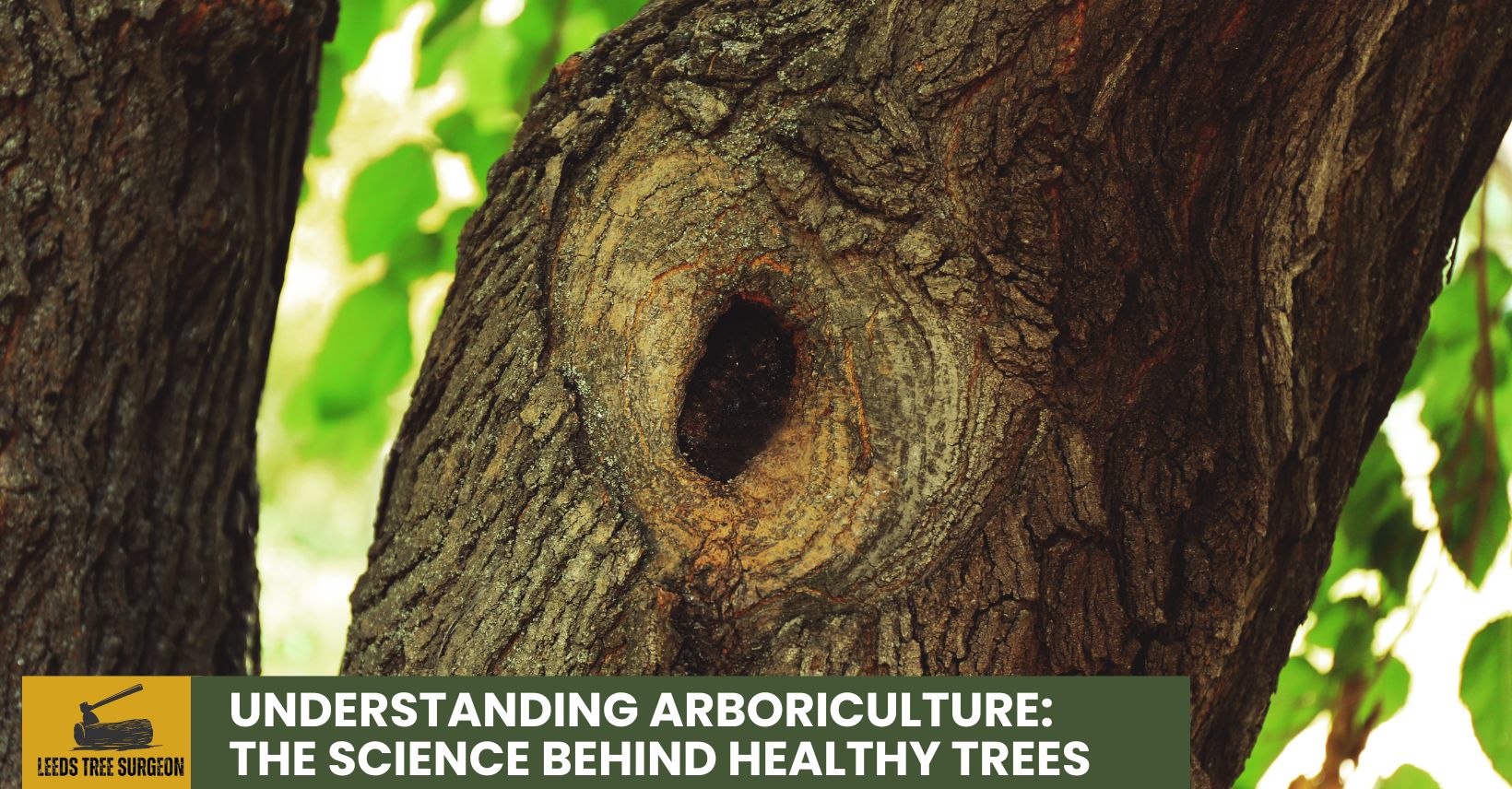Arboriculture, the science of cultivating and managing trees, plays an important role in maintaining the health and safety of our natural environment.
This practice ensures the longevity of our green spaces through activities such as tree pruning and disease management.
We will explore the importance of arboriculture, its key practices, tools, and technologies, and the challenges faced in this field.
Join us as we delve into arboriculture and its promising future.
What Is Arboriculture?
Arboriculture is a specialised field within plant sciences that focuses on cultivating, managing, and studying individual trees, shrubs, and other perennial woody plants.
One of the primary goals of arboriculture is to improve the health, safety, and aesthetics of trees in diverse settings. Arborists leverage their deep understanding of tree biology to evaluate tree health, identify diseases, and implement appropriate treatments to sustain tree vitality. By mastering knowledge about growth patterns, root systems, and exact environmental needs, arborists can effectively guide their decisions regarding pruning, fertilization, and pest management. This essential knowledge underscores the significance of arboriculture, a field pivotal to maintaining the ecological balance and enhancing the beauty of our landscapes.
The Importance of Arboriculture
Arboriculture’s significance is profound. It underpins urban forestry, enhances environmental sustainability, and boosts landscapes’ aesthetic and economic value. This essential practice supports thriving urban green spaces and sustainable ecosystems, setting the stage for a detailed exploration of the reasons highlighting arboriculture’s importance.
Tree Health and Safety
Ensuring tree health and safety involves regular inspections and risk assessments to identify and mitigate potential hazards.
These inspections typically involve assessing the trees’ overall health looking for signs of disease, decay, or pests. Conducting risk assessments helps evaluate the trees’ stability and identify any structural weaknesses that could pose a danger.
Once potential risks are identified, appropriate tree care practices such as pruning, cabling, or tree removal may be implemented to address these issues. Addressing tree diseases promptly and ensuring proper structural integrity enhances the landscape’s aesthetic appeal and reduces the risk of accidents and property damage.
Environmental Benefits
Trees provide multiple environmental benefits, including enhancing urban greening, increasing tree canopy cover, and reducing soil erosion.
Trees also play a vital role in improving air and water quality. Through photosynthesis, trees absorb carbon dioxide and release oxygen, helping to reduce greenhouse gases in the atmosphere and enhance air quality. In addition, tree canopies provide shade, reducing the urban heat island effect and cooling the surrounding areas. This improves residents’ comfort and lowers the energy consumption needed for air conditioning, thus reducing carbon emissions. Trees support biodiversity by providing habitats for various species of birds, insects, and other wildlife.
Aesthetic and Economic Value
Trees significantly contribute to the aesthetic appeal and economic value of properties and urban landscapes.
When carefully selected and strategically placed, different tree species can add character and charm to residential areas, making them more visually appealing and desirable. Beautiful, mature trees lining streets and adorning green spaces create a sense of tranquillity and sophistication, undoubtedly attracting potential buyers and driving up property values.
Thoughtful landscape architecture that integrates a variety of trees boosts aesthetic appeal and delivers effective environmental perks. These benefits include enhanced air quality, noise mitigation, and temperature control, which improve residents’ quality of life while offering savings on energy costs and healthcare expenses. These ecological advantages underscore the importance of adopting key practices in arboriculture, which ensure trees are maintained healthily and effectively, further enhancing their contribution to urban and rural landscapes.
Key Practices in Arboriculture
Key arboriculture practices include techniques and activities to promote tree health, growth, and safety, such as pruning, trimming, planting, and soil management.
Pruning
Pruning is a critical practice in arboriculture that helps maintain tree structure, aesthetics, and overall health.
Pruning supports the tree’s structural integrity and prevents potential hazards by strategically removing dead or diseased branches. Proper pruning techniques can enhance air circulation within the canopy, reducing the risk of diseases. Timing is important for pruning, as it can vary depending on the tree species and desired outcome.
Pruning during the dormant season is often recommended, as it minimises stress on the tree. Sharp, clean tools are essential for precise cuts that promote healing and prevent damage. Effective pruning improves the tree’s appearance, prolongs its lifespan, and enhances its overall vitality.
Disease and Pest Management
Effective disease and pest management is essential for maintaining tree health and preventing the spread of harmful pathogens and insects.
Common tree diseases, such as Dutch elm disease, oak wilt, and powdery mildew, can wreak havoc on trees if left unchecked. Pests like emerald ash borers and tent caterpillars can quickly infest and weaken a tree. Tree care professionals employ various strategies to manage these threats, including regular monitoring, proper pruning practices, and targeted treatments.
Early detection and intervention play an important role in preserving tree health by preventing the disease from spreading to nearby trees. By staying vigilant and taking proactive measures, tree owners can ensure their trees remain healthy and lively for years.
Tree Planting
Tree planting is a fundamental aspect of arboriculture that contributes to urban forestry and environmental sustainability.
When considering tree planting, it is important to choose appropriate tree species based on the local climate, soil conditions, and available space. Selecting native species can enhance biodiversity and support local wildlife.
Site preparation also plays an important role in the success of tree planting. Clearing the planting area of weeds, rocks, and debris and ensuring proper drainage can help establish healthy root systems. For successful planting, it is recommended to dig a wide planting hole and backfill with a mix of native soil and organic matter to provide nutrients.
After planting, watering regularly, mulching, and pruning when necessary are essential for the long-term care of newly planted trees.
Soil Management
Proper soil management involves testing, fertilising, and watering for tree health.
Trees struggle to thrive and reach their full potential without a suitable soil environment. The soil conditions directly impact the tree’s ability to absorb essential nutrients and maintain proper hydration levels.
Soil testing is key in determining the soil’s pH levels, nutrient content, and overall health. This information guides fertiliser applications to address deficiencies and promote optimal growth.
Watering trees, especially during dry spells or drought, is important for hydration and preventing stress, enhancing the tree’s overall well-being. A consistent routine in soil management supports long-term tree health, integrating practices that ensure adequate moisture and nutrient availability. This foundational care is supported by the advancements in arboricultural tools and technology that further optimize tree care, leading us seamlessly into exploring the latest tools and technology in arboriculture.
Tools and Technology in Arboriculture
Modern arboriculture relies on a range of specialised tools and technologies to enhance the efficiency and safety of tree care services.
A climbing harness, essential for stability and safety, enables arborists to ascend and navigate tree crowns effectively. Rigging tools like pulleys, ropes, and carabiners are integral in safely lowering branches, thus preventing property damage. Furthermore, advanced diagnostic tools such as seismograph drills and sonic tomography provide critical data on tree health and structural integrity, supporting informed pruning or removal decisions. These sophisticated tools underscore the evolving nature of arboriculture, which faces multiple challenges in urban and suburban landscapes. This transition leads us to a deeper exploration of the challenges in arboriculture.
Challenges in Arboriculture
Arboriculture faces several challenges, including tree diseases, pest infestations, and environmental stressors that can impact tree health.
Tree diseases such as Dutch Elm Disease and Oak Wilt can rapidly spread through a population, posing a substantial threat to tree health.
Managing pests like emerald ash borers and tent caterpillars requires constant vigilance to protect tree ecosystems.
Arborists must navigate the effects of climate change, such as extreme weather conditions and shifting growing seasons, which can stress trees and alter their growth patterns.
Ongoing research and collaboration are essential for crafting effective strategies that address the challenges faced by urban trees and ensure their preservation. This commitment to innovation and knowledge exchange is foundational for the future of arboriculture, setting the stage for the concluding insights on its evolving role in our ecosystems.
Conclusion: The Future of Arboriculture
The future of arboriculture lies in sustainable practices and continuous advancements in tree care knowledge and technology.
Arboriculture plays an important role in maintaining the health and vitality of urban environments by ensuring proper tree care and management. Not only do trees contribute to air purification, provide shade, and enhance the aesthetic appeal of cities, but they also offer multiple environmental benefits, such as reducing noise pollution and improving water quality.
Advancements in arboriculture, such as developing new tree care techniques, improved tree assessment tools, and sustainable planting practices, are essential to meet the increasing demands of urban landscapes. Professional tree care advice and expertise are vital to maintaining a balance between urban development and the preservation of green spaces. See here for more information.





